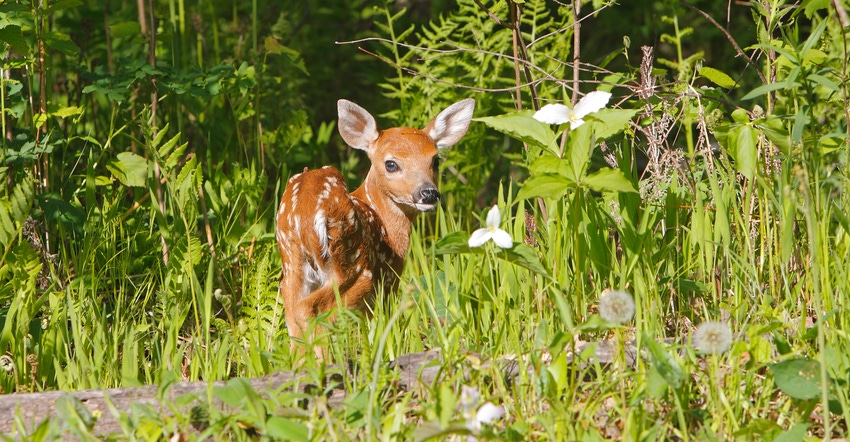March 8, 2021

Preliminary results of a study testing white-tailed deer spleens for presence of neonicotinoid pesticides show exposure of deer throughout the state, according to the Minnesota Department of Natural Resources.
Further analysis is required to determine if the levels of exposure seen are high enough to adversely affect deer health. Additional study results related to exposure levels will be available this spring.
Neonicotinoids, often referred to as “neonics,” are the most widely used class of insecticides worldwide and are found in more than 500 commercial and domestic products in the U.S. They are present in a wide array of products used for insect control in homes, gardens, yards and crops, as well as on pets. Specific to agriculture, neonicotinoids are used as seed treatments to protect crops from damage by insects, such as aphids, Colorado potato beetles and white grubs.
The DNR launched a research project in fall 2019 following a study conducted on captive deer in South Dakota that raised concerns about potential adverse effects of neonicotinoid exposure, including reduced fawn survival.
The DNR asked Minnesota deer hunters to submit spleens from their harvested wild deer. Nearly 2,000 people requested sampling kits to participate in the study, and 800 spleens were collected from all areas of the state.
Michelle Carstensen, DNR’s wildlife health program supervisor, said the agency wanted to know if wild deer in the state’s natural settings are being exposed to neonics, and if certain habitat types had a higher risk.
Majority of samples indicate neonic exposure
The DNR’s preliminary results show that deer across the state have been exposed. Of the 800 deer spleens that hunters harvested in Minnesota during the 2019 hunting season, 61% of samples indicated exposure to neonicotinoids.
While these preliminary data focused on deer, Minnesota Department of Health believes there is likely little-to-no human health risk for consuming venison from deer that may have been exposed to neonicotinoids. These early findings suggest concentrations found in the deer spleen samples were far below the U.S. EPA’s allowable levels for consumption of other foods, like fruit or beef, that may have neonicotinoid residue.
The Minnesota DNR is planning additional sampling this fall and is exploring future research options on neonicotinoids in wildlife. Carstensen also thanked hunters who participated in the initial study.
“Their contributions are essential to this important research,” she says.
Hunters who submitted samples in fall 2019 will be emailed the specific test results from their deer. Hunters who wish to contribute to future research can subscribe to the Deer Notes newsletter, which includes deer-related citizen science opportunities.
Source: Minnesota Department of Natural Resources, which is solely responsible for the information provided and is wholly owned by the source. Informa Business Media and all of its subsidiaries are not responsible for any of the content contained in this information asset.
You May Also Like




